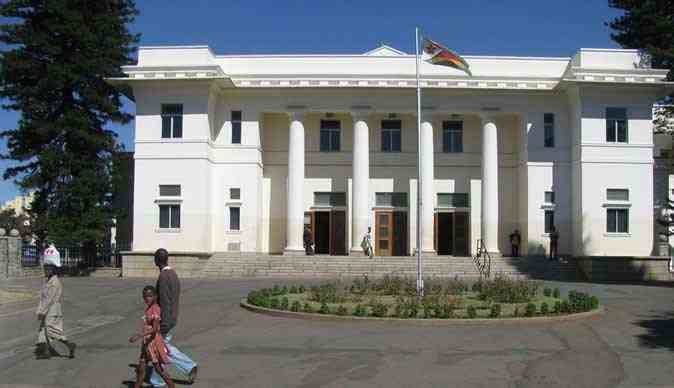
Book Title: Portrait of Emlanjeni
Author: Tsitsi Nomsa Ngwenya
Publisher: Carnelian Heart Publishing Ltd, 2023
Paperback ISBN: 978-1-914287-34-3
Ebook ISBN: 987-1-914287-35-0
FOLLOWING in the heels of her novel, Izinyawo Zayizolo (2016) and a short story collection in English called The Fifty Rand Note and other stories (2017), Tsitsi Nomsa Ngwenya’s latest offering, the novel called Portrait of Emlanjeni, confirms this writer from Matopo as a voice to reckon with in Zimbabwean literature.
This novel is poignant and compelling as it takes the reader into the heartbeat of Emlanjeni.
The gripping narrative portrays the thriving and the enduring sense of place and the human spirit as colourfully lived by the people of Emlanjeni.
- Ngwenya revisits past under erasure in A Portrait of Emlanjeni
- Ngwenya’s novel takes reader into heartbeat of Emlanjeni
- Portrait of Emlanjeni: A review by Memory Chirere
Keep Reading
The excellent tapestry of the people of Emlanjeni confluence at the intersection between a fleeting and evanescent idyllic past and the nervousness of the modernity brought by Western products, foreign influences, new knowledge and novel ways of being and consumption.
It is a novel about a village’s encounter with the bigger world out there.
The novel portrays a confluence of spaces which are contentious, bringing intractable linkages between the past, present and future.
Marginalized young men find no economy and survival in Southern Zimbabwe’s Emlanjeni area. Following the closure of industries in Bulawayo due to a series of economic challenges, these young men take the archetypal trek to South Africa, the supposed land of gold.
This has been a powerful motif ever since the works of the great Ndebele novelist, Sigogo.
You go away and return as a dead body covered under the groceries in the tshangani bags in trailer. You go away and send back money and colourful clothes to beloved ones.
You go away and become a lingering memory in the mind of a waiting lover. You go away with the intention to return.
You return too, in various ways. This book is about the happy and sometimes tragic return from South Africa. Meanwhile the land, the rivers and the hills continue to produce more people.
The malayitshas’ vans and tshangana bags become the conveyancers of goods, news, people-sick, well, and dead- between Emlanjeni and the outside world.
The malayitshas’ vans and tshangana bags become conduits which purvey new expressions of personhood, being and consumption to Emlanjeni.
But Emlanjeni, notwithstanding intercourse with the outside, wide world, also recoils into itself and claims a certain aura of particularity as its inhabitance also see themselves as an enclave of the particularity of pure IsiNdebele culture, sense of being, art and cultural uniqueness.
Emlanjeni is a world where women engage in weaving and other creative and cultural expressions such as inshongwana ceremonies and other festivities.
It is also a world of vengeful spirits. It is a land where one sees a thriving traditional legal system and jurisprudence sitting side-by-side with the Western notions of law and justice as there is a court and some shops at Kezi business centre.
It is a land where women explicitly and implicitly, through innuendo, whisper about their sexual appetites, tastes, fears and desires.
This is a powerful narrative about what it means to be a Ndebele woman in the changing times.
Sometimes you take out your pen and underline certain traditions and norms for further references, making this novel a library of Ndebele culture.
But Emlanjeni is also a memoryscape; a land haunted and scared by sad, blood-curdling memories which make its inhabitants nurse sorrow fear and anger linked to the bitter military conflict that took place in that part of the country in the early 1980’s which led to the sad loss of life and property.
You notice that while the memories run deep they are kept hushed in the skin and hearts of people and remain deeply impenetrable as the access to Emlanjeni itself which access thereof requires the malayitshas’ vans, “curving, turning and meandering.”
This novel clearly depicts the body as a mnemonic space, a space of remembering; bodies are structured and depicted as embodied textualities which tell stories of Emlanjeni alongside the Bhalagwe mine dumpsite.
When people view the dumpsite, in a very denuded and dry area of Emlanjeni, “they look at their hands or laps. The harrowing memories are always there even if the elders who witnessed the horrendous events are gone.”
Through representation and embedded silences as aptly captured by Ngwenya’s novel, clearly situate the body as having the texture and representational capacity to mediate larger discourses of naked capitalism, the negative effects of capitalism, and have the power to persuade and rescript memories of loss, mourning and grief, and shame.
Zanele’s struggles and an enduring sense of hope, as depicted in the narrative under review, buttress the power of bodies to remember and script multiple narratives as, “the memory of their encounter” with Sipho penetrated her body like a deep stab of a knife.
The relationship between Sipho and Zanele plays out in a dry land out in the bushes and as Sipho forces himself on Zanele’s body, there is the rapture of innocence.
Zanele’s struggle becomes the struggle of the land as it cries out for rain and justice. Zanele’s struggle to go to school amidst the shame she goes through, brings out that desire in African women to stand up for themselves in communities that try to refuse to allow women to go beyond the village.
The women in this novel come to us in their varieties, but each one of them has a language that is unique. The women are not homogenous and that is something that lingers on long after you close this book.
Emlanjeni resonates with many a place in Africa south of the Sahara. It is so beautifully represented as a place you know, which makes your heart throb. It could be any place where people attach so much to space and values.
Emlanjeni is a place and the dreams it nurtures and the secrets it keeps carry so much value.
It is important to note that through this novel, the UK based Carnelian Heart Publishing LTD continues to demonstrate the desire to invest in Zimbabwean culture from such a distance.
There is a clear demonstration that Zimbabwean literature has come of age. Ngwenya has joined the growing list of writers from southern Zimbabwe alongside No Violet Bulawayo, Brian Chikwava, Novuyo Rosa Tshuma and others.
Vuso Mhlanga is a literary critic and academic, at University of Zimbabwe in Harare.










